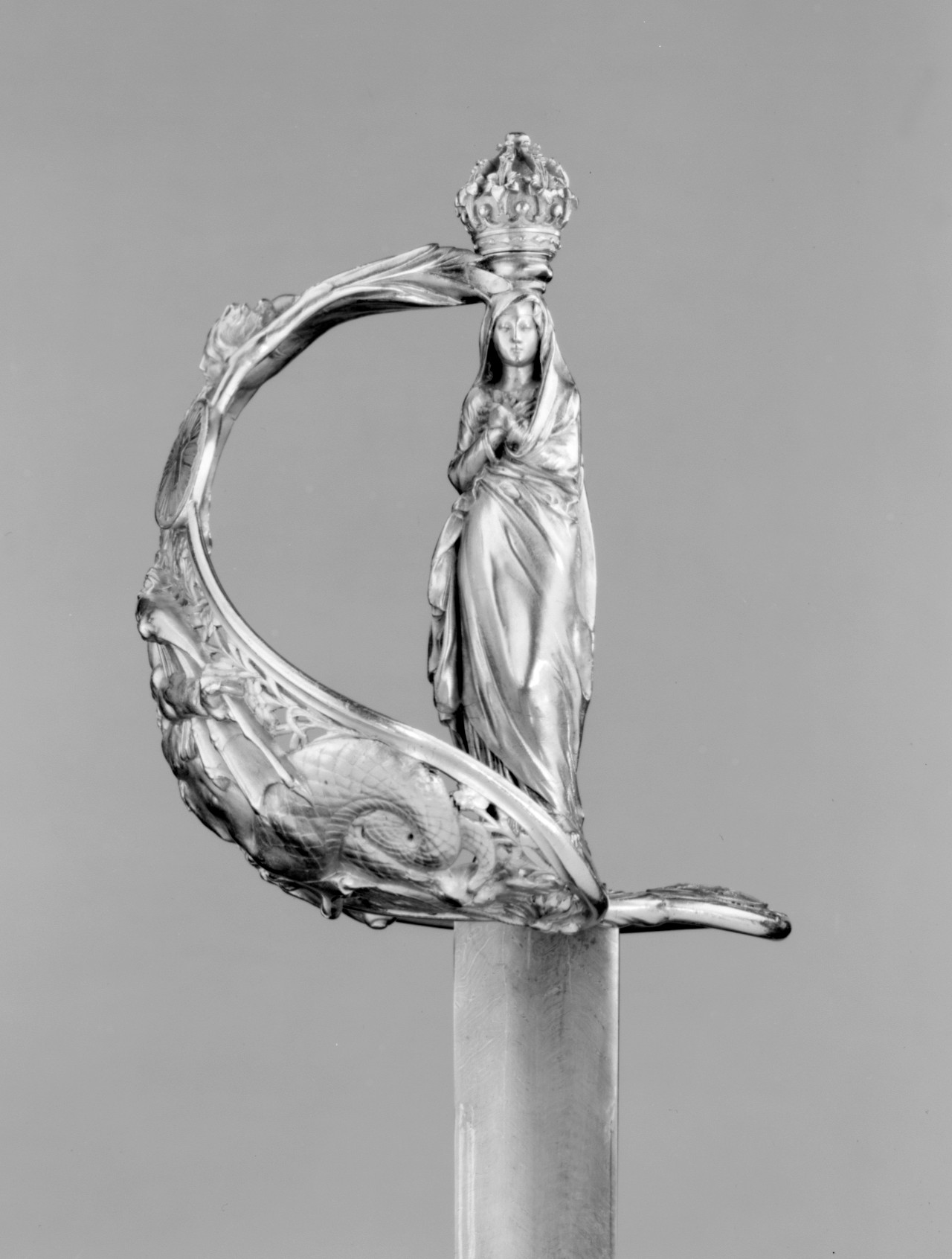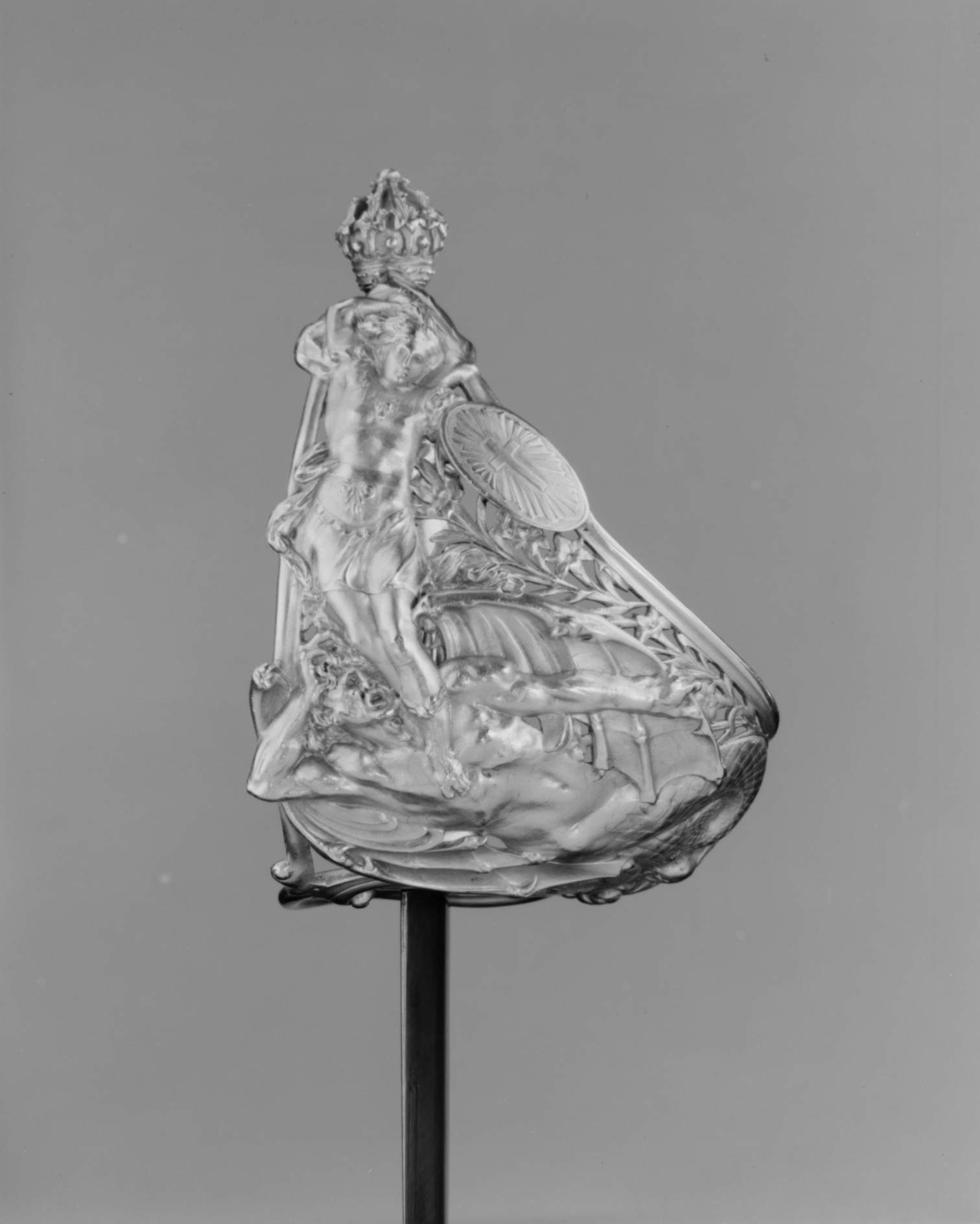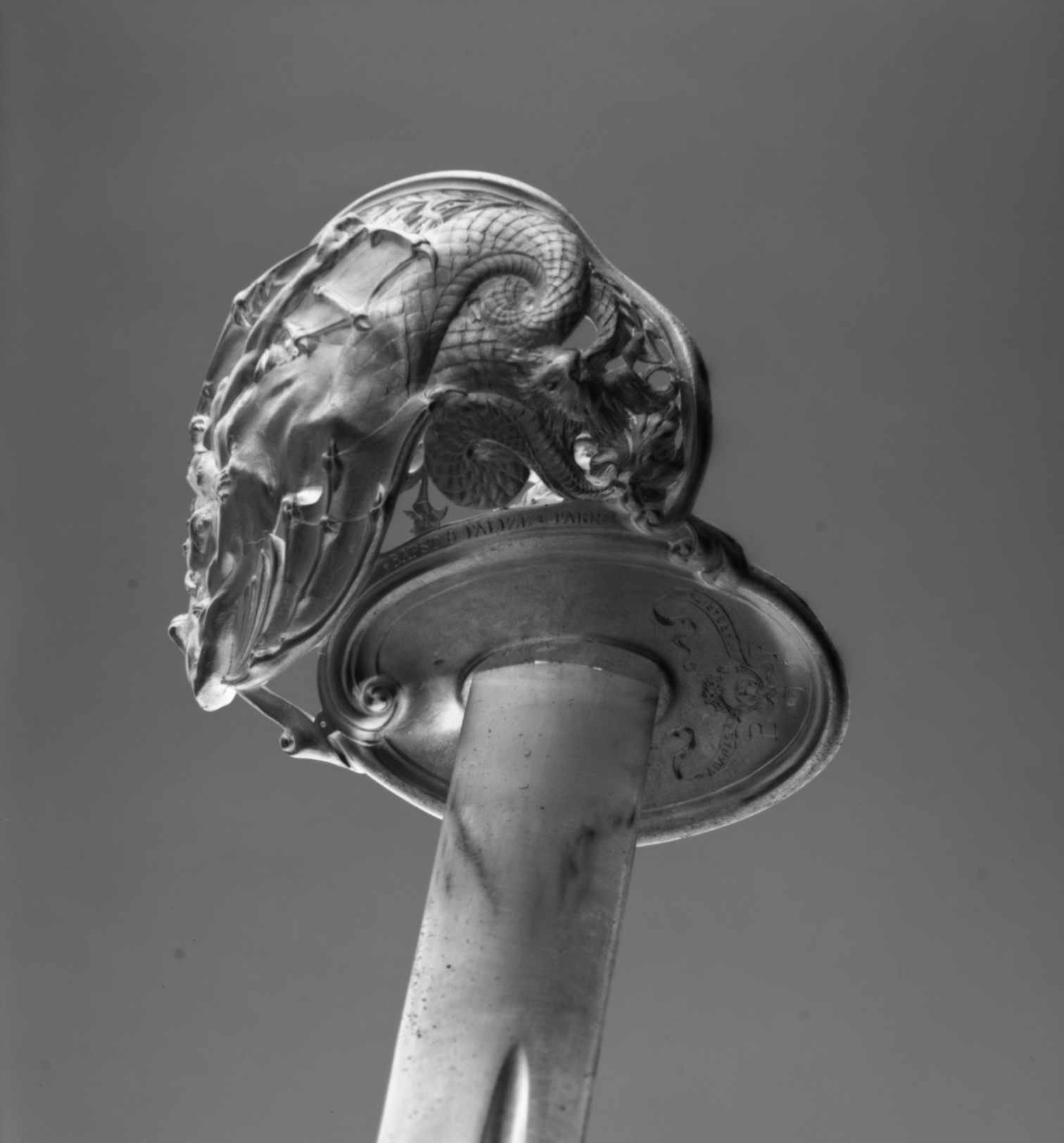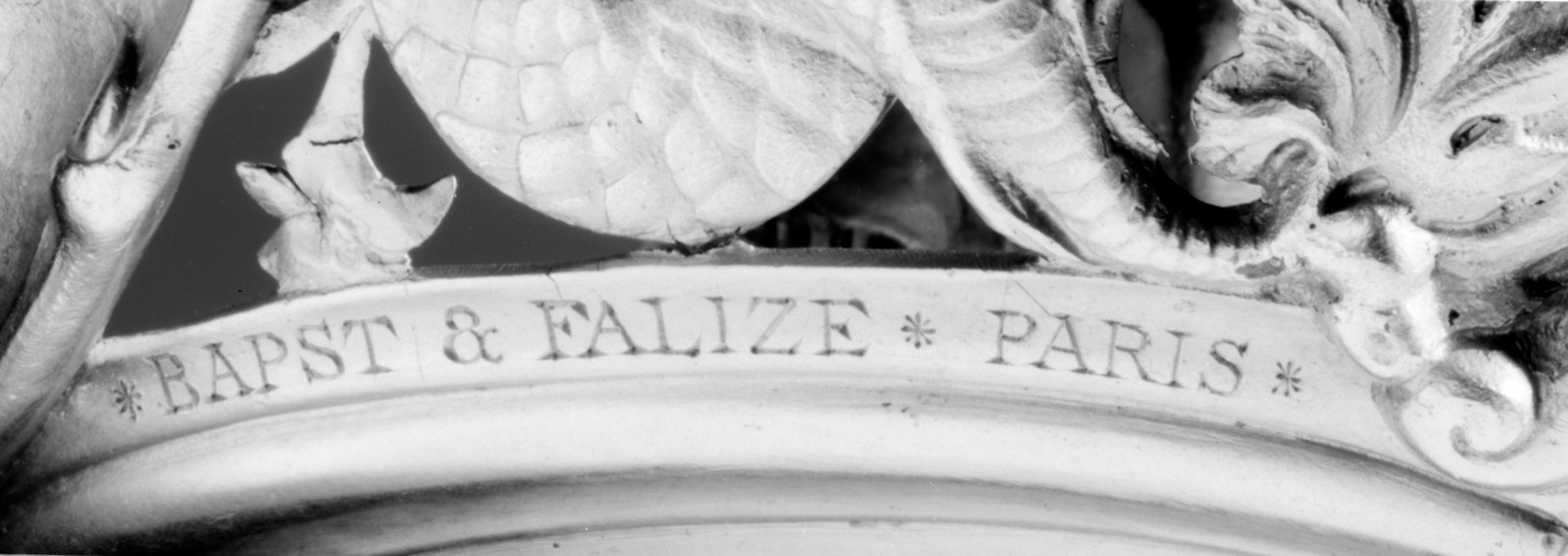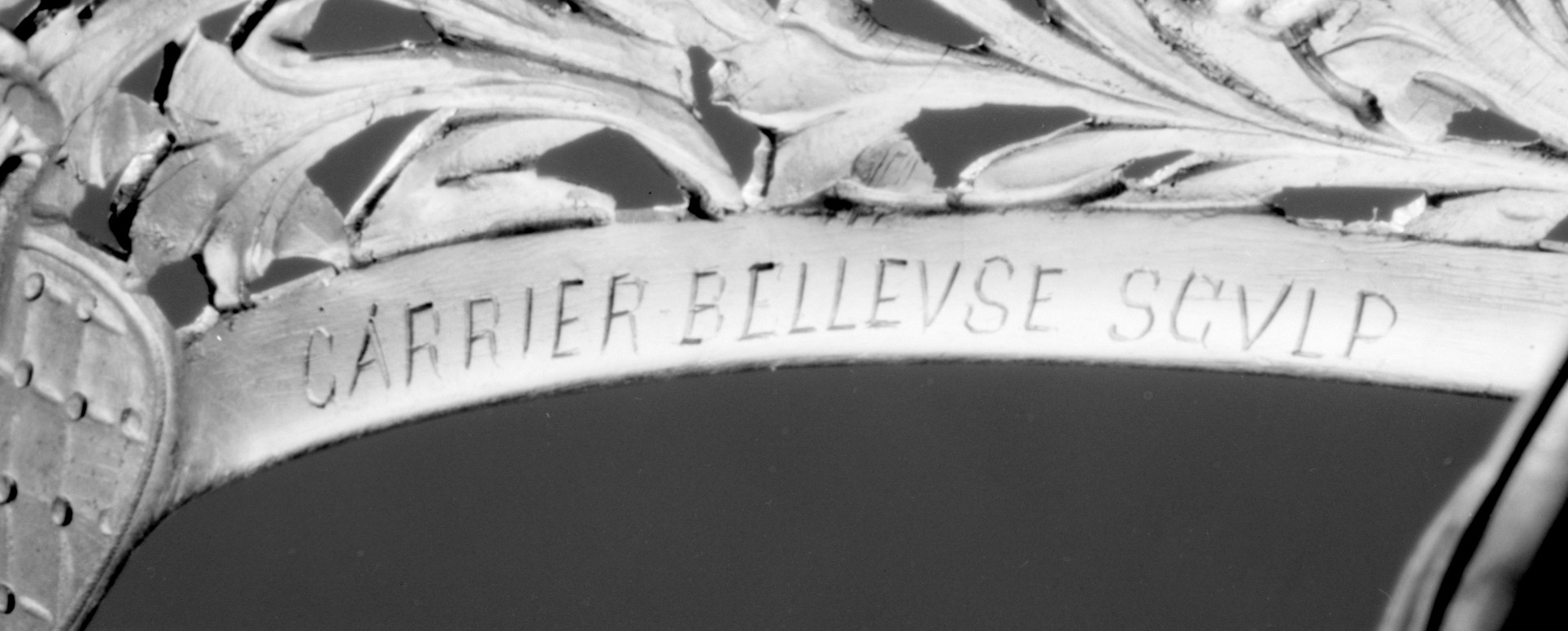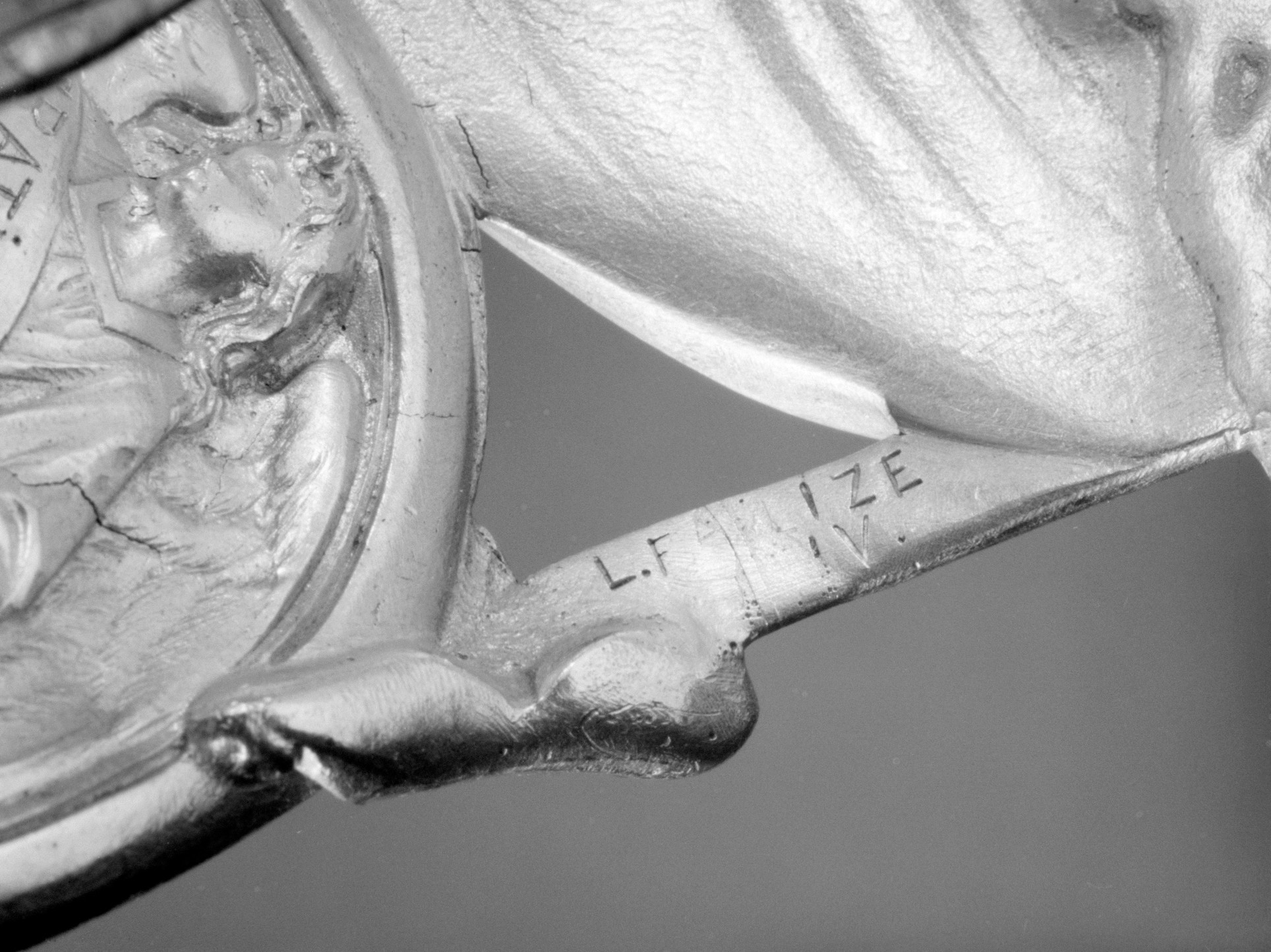Sword Hilt
Designed and modeled by Albert-Ernest Carrier-Belleuse French
Executed by Lucien Falize French
Not on view
The grip of this superb late-nineteenth-century sword hilt is a miniature sculpture in the round of the Virgin Mary. Revered as the Mother of God, Mary is the object of the greatest devotion in the Christian tradition after Jesus. The basket guard surrounding the grip is a splendidly executed low-relief sculpture that depicts the archangel Michael vanquishing Satan.
The hilt was modeled by the sculptor Albert-Ernest Carrier-Belleuse (1824–1887) and was carried out in gilt bronze by the goldsmith Lucien Falize (1842–1897) in Paris about 1882. It was commissioned by Gaston, Prince of Béarn and Chalais, whose coat of arms and motto, DEI GRATIA SVM QVOD SVM (By the grace of God I am what I am), appear on the hilt at the feet of the Virgin. Mary's status as the Queen of Heaven is conveyed by the sword pommel, made in the shape of a crown of lilies placed above her head. Lilies, which symbolize purity and the Virgin's calling as the mother of Jesus, are one of Mary's most frequently depicted attributes.
According to Béarn family tradition, the hilt represents Mary as Our Lady of Victory. This is one of the several forms in which Mary is invoked to meet special needs. Here it refers to her as the divine protector and patron of soldiers entering battle. The image of victory is vividly expressed by the presense of Saint Michael, the leader of the heavenly armies in the fight against the forces of evil. He is often depicted, as he is here, above a plummeting figure of Satan. The image is based on a passage in the Revelation of Saint John, the last book of the New Testament: "And there was war in heaven. Michael and his angels fought against the dragon, and the dragon and his angels fought back. But he was not strong enough, and they lost their place in heaven. The great dragon was hurled down––that ancient serpent called the devil, or Satan, who leads the whole world astray. He was hurled to earth and his angels with him" (Revelation 12:7–9).
Religious symbolism is frequently encountered in the decoration of arms made in Europe until well into the seventeenth century. The type of evocative sacred imagery found on this hilt, however, is almost without parallel in late-nineteenth-century weapons. The prince of Béarn was deeply devoted to the cult of Our Lady of Lourdes, which was founded on a widespread belief in the miraculous appearances of the Virgin Mary to a peasant girl in the town of Lourdes, in southwestern France, in 1858. Prompted by this faith, he commissioned several works of art on the subject of the Virgin Mary, including this exceptional sword.
Due to rights restrictions, this image cannot be enlarged, viewed at full screen, or downloaded.
This artwork is meant to be viewed from right to left. Scroll left to view more.


